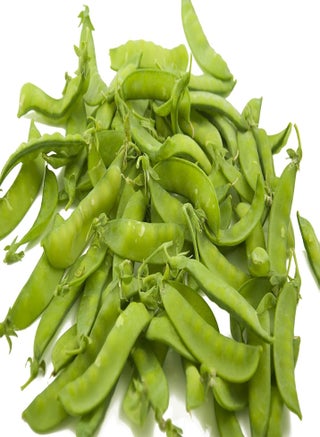Free & Easy Returns
Best Deals

This variety has won the RHS Award of Garden Merit for its outstanding performance. The pods are best harvested whilst still young and have not bulked up to much. The pods can be cooked or eaten raw, for the best flavour the pods are best steamed.
Growing Instructions for Pea:
Peas require a sunny, position with well-drained but rich soil with a neutral ph. Sowing in well drained soil, peas can be sown outdoors in November, for an early crop.
In spring, wait until the soil is warm to the touch, which will be some time between the middle of March and the middle of May, depending on your soil and where you live. Putting a layer of fleece over the soil in early March will help warm up the soil by as much as a couple of weeks. Make successional sowings every two weeks.
Sow seed in a single row 5 to 10cm (2 to 4in) apart, ensuring there is enough space for plant supports. Make a single V-shaped drill, 5cm (2in) deep, water the base of the drill and sow the peas. A second row can be added, as long as it’s 30cm (12in) away from the first drill.
It is important to have room to get between the rows to pick - 3ft is probably the minimum and 6ft is ideal. If using the latter spacing, a crop of radish or lettuce can be grown in the gap, to be harvested before you start picking the peas.
Water your peas well after sowing, and then leave them - except in very dry weather - until they flower, when they should have a really good soak to encourage good pod formation.
Highlights:
Botanical Name: Pisum sativum
Common Name: Oregon Sugar Pod Pea
Plant Type: Vegetable plant
Life Cycle: Annual
Sun Exposure: Full Sun
Soil Type: Loamy, Sandy
Soil PH: Acid, Neutral
Rate of growth: Intermediate
| Product Weight | 0.1 g |
| What's In The Box | Oregon Sugar Pod Pea - Pisum sativum VARmacrocarpon Vegetable Seeds, Also Known as Snow Pea or Mangetout Home Garden Planting by Heavy Torch, 400 Seeds |

